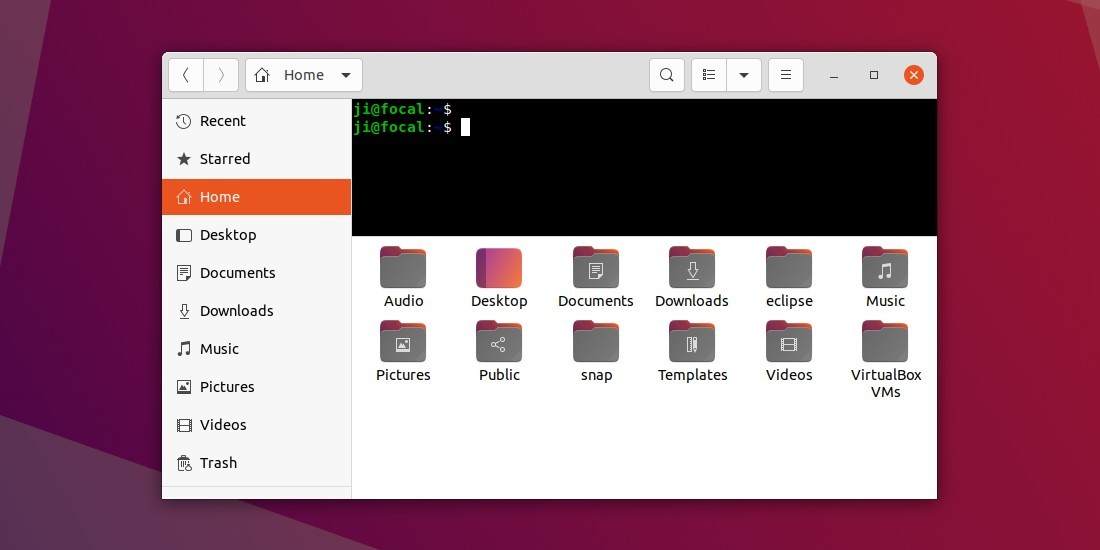
- UBUNTU OPEN IN TERMINAL HOW TO
- UBUNTU OPEN IN TERMINAL INSTALL
- UBUNTU OPEN IN TERMINAL UPDATE
- UBUNTU OPEN IN TERMINAL SOFTWARE
UBUNTU OPEN IN TERMINAL INSTALL
If you're using Fedora GNOME edition, you can install Zoom using the GNOME application center. sudo zypper remove zoom Oracle Linux, CentOS, RedHat, or Fedora Using a graphical installer (Fedora only) If you want to uninstall, run the following command in the terminal.

If you have issues installing, make sure you have the following dependencies installed. If you installing on a 32-bit system, the filename is zoom_openSUSE_i686.rpm. Sudo zypper install zoom_openSUSE_x86_64.rpm Note: Make sure you enter the correct RPM filename.
UBUNTU OPEN IN TERMINAL UPDATE
If dependencies are not installed when using the terminal or graphical installer, run this command to update the package database, then try installing Zoom again. If you're using Debian and get an error saying you are "not in the sudoers file", run the following commands, then try installing again.In most cases, the filename will be zoom_b, but will be different if you have using a 32-bit system or a DEB file for an older version of Debian or Ubuntu. Make sure you enter the correct DEB filename.

Type in the following command and press Enter to run it.Right click in the file manager and click Terminal or Open in Terminal to open the terminal in the current location.Open the download location using a file manager.Download the DEB installer file from our Download Center.Double-click the installer file to open it using GDebi.Enter your admin password and continue the installation when prompted.If you're using Debian and get an error saying you are "not in the sudoers file", run the following commands to install sudo, then try installing GDebi again.GDebi is usually installed by default on most Ubuntu-based distros.Open the terminal, type in the following command and press Enter to install GDebi.This method is recommended for those who are new to Linux or prefer a graphical installer. Note: These steps also apply to most other Ubuntu-based distros like Kubuntu and Elementary. Using a graphical installer (Fedora only).Oracle Linux, CentOS, RedHat, or Fedora.Note: If you are a new or inexperienced Linux user, follow sections to use the graphical installer. You can also use these instructions to update an existing Zoom installation on Linux. If not, securities holes and system’s vulnerabilities would be the least of your problems, not to mention bandwidth and resource consuming connections.Follow these instructions to install Zoom on Linux distros like Debian, Ubuntu, Linux Mint, and Arch. So as an alert Linux user, it’s imperative to be aware of probe for open ports in your system, which ones are open by default, closing open ports and allowing exceptions. When dealing with a well-known distribution as Ubuntu, there are multiple tricks and features that check for, close or open ports. Applications listen for ports to achieve a successful communication from the outside. Port numbers is a 16-bit unsigned integer that range from 0 to 65535.
UBUNTU OPEN IN TERMINAL SOFTWARE
Or: application-specific or process-specific software construct used as a numeric identifier of a particular connection between two applications. What is a port? In simple words: a door to a program running in your operating system.

UBUNTU OPEN IN TERMINAL HOW TO
In this tutorial we’ll learn how to check for listening ports, using numerous tools, along with managing ports by allowing or disallowing incoming and outgoing connections.


 0 kommentar(er)
0 kommentar(er)
